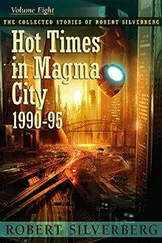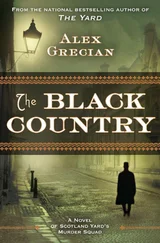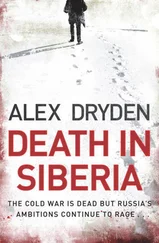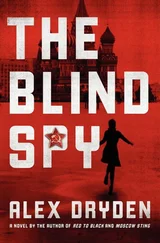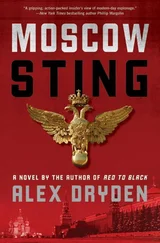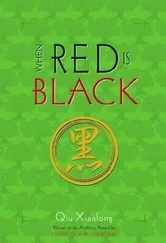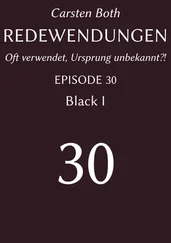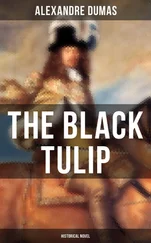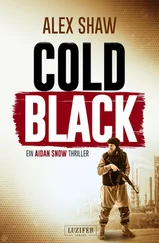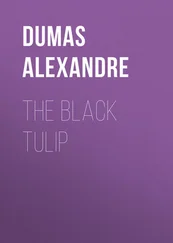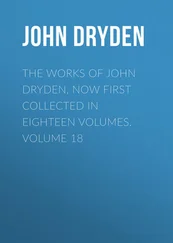‘I met my father in Vaduz and he asked me to go with his wife on this holiday instead of him. We had the same first names and it would be easy for me to simply substitute myself for him. I didn’t want to. The idea of spending a week with his woman was repugnant to me. He offered to buy me a new car and I accepted. I was broke. So I went to Hierra and had a horrible time, drinking too much and trying to get away from her. We had to share a room to make it look right on the bill that the intermediary was paying. It wasn’t an enjoyable week.
‘And my father stayed behind in Liechtenstein. He told nobody but me and his wife. He kept it a secret. He hid out in an old shepherd’s hut a few miles over the mountain from here. He came up here in the early evenings of the weekend these men rented the place and stayed in the cover of the trees over there.’ He waved vaguely in the direction of the door. ‘There was a lot of security, he told me later, and that was as close as he could get. And he brought a camera with him. These are the pictures he took.’
The farmer separated the three older pictures and turned them round to face Finn.
‘The man on the far right you know. Most of the newspaper-reading public knows him.’
Finn and I bent over the first picture and looked at a tall, grey-haired figure. I recognised him immediately: a very senior, long-serving German politician from the political elite. Then I looked at the third figure from the right and recognised a KGB general, the SVR’s central Asian boss, who liaises with the Uzbeks and their drug cartels. In between these two was a man I didn’t know. Nor did I recognise the others. But Finn seemed to know everyone in the picture.
‘Quite an interesting weekend,’ Finn said.
‘These three pictures were taken in 1989,’ the farmer repeated. ‘And these I took earlier this year, when there was a second meeting here, between the same men.’
The two recent photographs were indeed the same group, shiny in the newness of the pictures.
‘They rented the farm up here for another weekend, fifteen years after they first took it. Maybe they’ve had other meetings, I’m sure they have, elsewhere. But this is what I have.’
He poured another shot of liqueur for each of us and raised his glass.
‘These are the kind of people who run our countries,’ he said. ‘To freedom from such men.’ Finn and I echoed the toast.
‘I don’t know why my father took the original pictures,’ the man mused quietly. ‘It was completely out of character. But I knew I had to do the same this year when they came back after all this time and, if only in memory of my father, I did.’
We left the farmer with the case of money and drove back down the track until we reached the road. Then Finn turned left, towards Germany, and we drove in silence for a while. I had the pictures on my lap, inside the stiff photograph envelope, inside the waterproof bag.
‘I wonder what he’ll do with all that money,’ Finn said, breaking the silence briefly. I guessed at how much of it there was from watching the farmer count the bundles and I was stunned by the cost.
‘He’ll probably hoard it up somewhere like all the mountain men,’ he continued. ‘The Troll, for example. I bet he turns out to be a multimillionaire when he dies.’
Once we were over the border and in Germany, Finn began to talk quietly about the men in the pictures.
‘There’s the German politician. He’s someone who might even become chancellor of Germany. And of course you know the KGB general, Anna. Then there’s a citizen of the former East Germany, a man called Dietz, who’s now a billionaire from his supermarket chains. And next to him to the left is a Swede called Bengsten. He’s an arms manufacturer. The old guy on the far right is an ex-Nazi, former SS. His name’s Reiter. He’s in his early eighties now and still running his business with the same efficiency as he ran his SS unit in 1945. He owns, lock, stock and barrel, the third-largest trucking company in Europe. But Reiter isn’t his real name, of course. He’s one of the brothers of Otto Roth. And finally, the last figure in the picture is Otto Roth himself.’
FINN AND I FLEWto Bucharest one early morning in July. He seemed to have very detailed instructions about how to enter Transdnestr undetected. I asked him if it was a route he’d ever used himself, but all he said was that this was one of Willy’s entry points into the Ukraine, through Transdnestr, from many years before when the Wall was still in place. And just a few days before we arrived, Willy had been back to check his old route still worked.
We stayed the night in Bucharest and watched a film and ate at a café in the vast Stalinist square that Ceausescu had built to glorify his empty rule; empire architecture without an empire. On the following day we took another plane, this time to Chisinau, the capital of Moldova.
The whole operation Finn had planned depended on the arrival and departure times of Reiter’s trucks. If our, or Dieter’s, information was correct, we knew the date of the next shipment that a truck of Reiter’s would be taking out of Transdnestr. What we needed to find out was where it would cross the border into the European Union.
I was accustomed to Finn’s disappearances and he left the hotel in Bucharest at nine o’clock that evening because he’d ‘run out of cigarettes’. The trip to buy them eventually took him over an hour. ‘They didn’t have my brand anywhere,’ he complained when he returned.
Maybe he had met Mikhail there, in Bucharest that night, or perhaps there was a drop arranged between them somewhere in the city.
Over supper that evening, Finn told me what little he knew of Transdnestr and I filled in the large gaps in his knowledge.
‘In London, we call it the Cuba of Europe,’ he said. ‘But I bet it’s much worse than that. Hardly anyone’s even heard of the place. It’s far more obscure than Cuba. Transdnestr doesn’t even officially exist. Even your people in Moscow who support it don’t recognise it as a country.’
The Russian puppet regime, which runs Transdnestr, issues its own currency, but it is not recognised anywhere else; it manages its own borders, even though no borders officially exist. It needs our army, which it calls a peacekeeping force, to maintain control.
‘It’s about the only place left that still looks like the Soviet Union did fifty years ago,’ I told Finn. ‘The 13th Army’s there, but we actually use the place as a secret training camp for the spetsnaz. I’ve trained there myself. But its real importance–i its raison d’être is as a marketplace for illegal arms deals, and as our “offshore” money-laundering centre.’
Up in the bedroom after supper, Finn laid out various maps of the region on the bed. Google Earth was of little use and he had an air map and another map of Willy’s from ‘a hundred years ago’, Finn said, which was probably the most useful. They showed a flat plain. To the east was the Ukrainian steppe, with Odessa on the Black Sea a mere seventy miles away: to the west was Moldova, to which Transdnestr actually belongs by international law, even though it is ignored by those who run the enclave and by Russia itself. Hence the Russian ‘peacekeeping’ force.
‘The way we control the place is by giving it free oil, gas and electricity,’ I told him. ‘The army’s there to exercise control and to ensure the necessary muscle is there if needed. Essentially the enclave’s run by our own people: former Russian special forces and KGB officers. Most of them were stationed in the Baltic republics before eighty-nine, before the Wall came down. And most of them are wanted by Interpol for crimes committed before the collapse of the Soviet Union. They’ve all changed their names now, of course.’
Читать дальше

